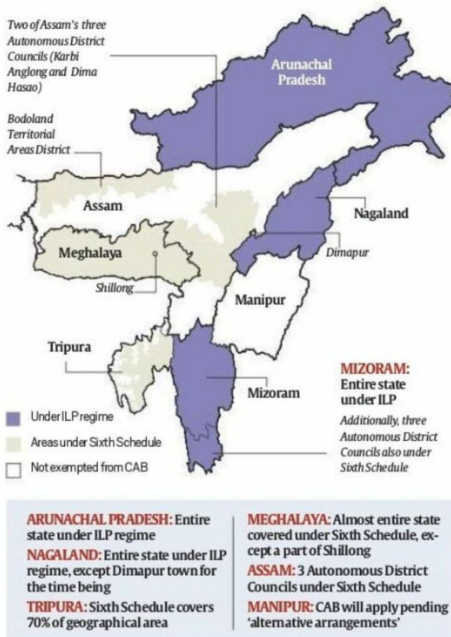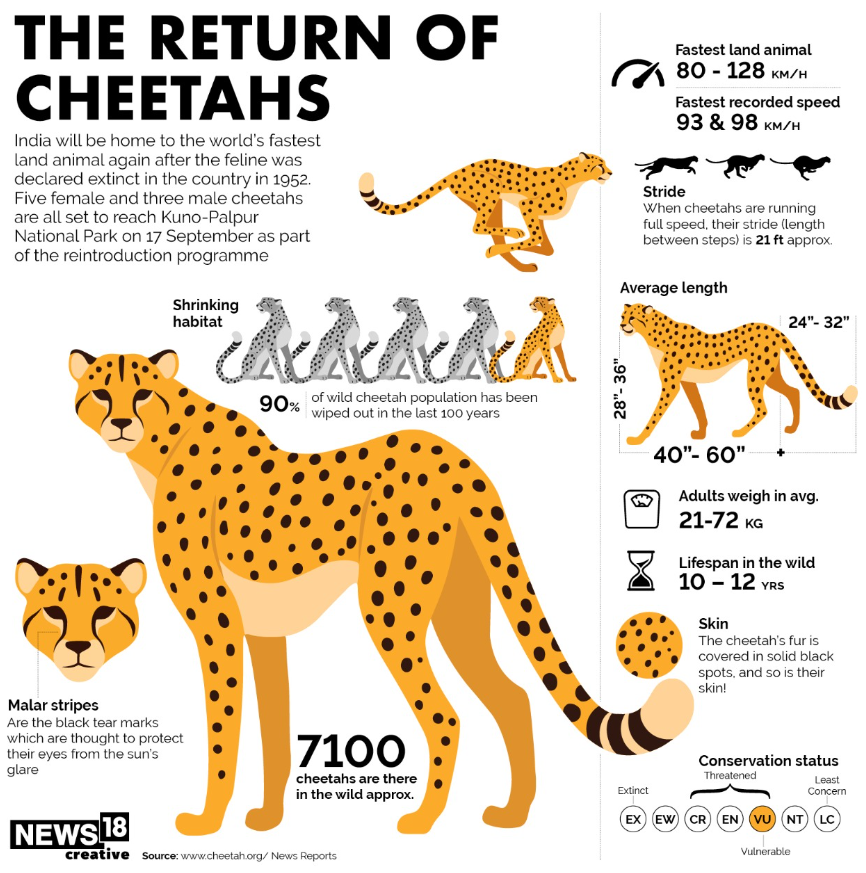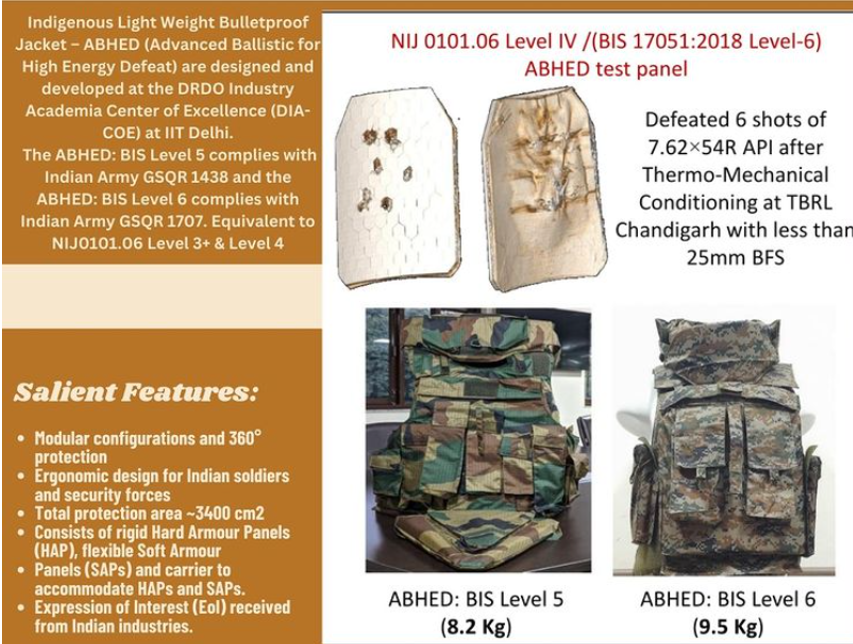26 September 2024 : Daily Current Affairs
1. Assam Government to Implement Key Recommendations of Clause 6 Committee, Constitutional Amendments Pending
- 1. Assam Government to Implement Key Recommendations of Clause 6 Committee, Constitutional Amendments Pending
- 2. Project Cheetah at Two Years: Challenges Loom as Cheetah Survival and Ecosystem Restoration Struggle
- 3. Leaders at UN urge world’s wealthiest to do more on climate
- 4. How global warming affects forecasting
- PRELIMS FACTS
- 1. Integral Humanism: Deendayal Upadhyaya’s Vision for a Harmonious and Indigenous India
- 2. India Joins US-Led Minerals Security Finance Network to Strengthen Critical Mineral Supply Chains
- 3. Special court in Karnataka orders Lokayukta investigation against CM
- 4. Hezbollah uses Fadi rockets with more power but little precision against Israel
- 5. DRDO & IIT Delhi develop ABHED Light Weight Bullet Proof Jackets
- 6. Astronomers map the Differential Rotation of the Sun’s Chromosphere using 100 Years of Kodaikanal Data
(Source: Indian Express; Section: Explained; Page: 15)
| Context: |
| The Assam government has initiated the implementation of 52 recommendations from the Clause 6 Committee of the Assam Accord, while deferring key provisions requiring constitutional amendments. |
Analysis of News:

About Assam Accord
- The Assam Accord was signed in 1985 by the Centre and the Assam government with the All Assam Student Union (AASU) and the All Assam Gana Sangram Parishad, which had spearheaded the 1979-85 Assam Movement against migration from Bangladesh.
- To implement the various Clauses of Assam Accord a new Department has been established in the name of “Implementation of Assam Accord Department” during the year 1986.
- The Accord set March 24, 1971, as a cut-off. Anyone who had come to Assam before midnight on that date would be an Indian citizen, while those who had come after would be dealt with as foreigners.
- The same cut-off was used in updating the National Register of Citizens (NRC).
Clause 6 of Assam Accord
- The Assam Accord, signed in 1985, was a historic agreement between the Union government and the leaders of the Assam Movement.
- Clause 6 of the Accord specifically promised safeguards to protect the cultural, social, and linguistic identity of the Assamese people.
- However, the exact implementation of these safeguards has been a point of contention for decades.
Biplab Sarma Committee Report
- In 2019, the Union government set up a committee, chaired by Justice Biplab Sarma, to recommend ways to implement Clause 6.
- The committee’s report, submitted in February 2020, proposed defining “Assamese people” and recommended various measures such as reservations in jobs, political representation, and safeguarding land and language rights.
Assam Government’s Response
- The Assam government, led by Chief Minister Himanta Biswa Sarma, has now decided to implement 52 out of the 67 recommendations made by the committee.
- These focus primarily on land, language, and cultural preservation. However, 15 key recommendations requiring constitutional amendments, such as political representation and job reservations, will be taken up with the Centre later.
Key Recommendations to be Implemented
- Land Rights: The creation of specific revenue circles where only Assamese people can own land.
- Language Protection: Continuing Assamese as the official language with provisions for local languages in specific regions.
- Cultural Heritage: Support for neo-Vaishnavite monasteries and the creation of cultural complexes across districts.
Recommendations Yet to be Addressed
- Key recommendations left out include political representation, such as 80-100% reservation in Assam’s parliamentary and assembly seats, and the introduction of an Inner Line Permit system for Assam.
- These politically sensitive recommendations will require further discussions with the central government.
Future Outlook
- While the Assam government is moving forward with the recommendations under its jurisdiction, the more contentious and constitutionally challenging recommendations remain unresolved, awaiting cooperation from the Centre.
- This phased approach aims to ensure some progress while keeping the larger political issues in the pipeline.
| Practice Question: Discuss the significance of Clause 6 of the Assam Accord and the challenges associated with its implementation in the context of protecting the cultural, social, and linguistic identity of the Assamese people. How do the recommendations of the Biplab Sarma Committee address these challenges? (150 words/10 m) |
2. Project Cheetah at Two Years: Challenges Loom as Cheetah Survival and Ecosystem Restoration Struggle
(Source: Indian Express; Section: Explained; Page: 15)
| Topic: GS3 – Environment – Conservation |
| Context: |
| The article assesses the progress and challenges of India’s Project Cheetah two years after its launch, focusing on cheetah survival, breeding success, and ecosystem restoration efforts. |
Analysis of News:

Overview of Project Cheetah
- Project Cheetah, launched two years ago on September 17, aims to establish a stable population of African cheetahs in India and restore open natural ecosystems. The project has faced both achievements and significant challenges.
Objectives
- Breeding Population: To establish a sustainable, breeding population of cheetahs in central India.
- Ecosystem Restoration: Using cheetahs as an umbrella species to restore ecosystems like grasslands, scrublands, savannahs, and degraded forests.
Achievements
- Initial Translocation and Breeding: The project successfully translocated 20 cheetahs from Namibia and South Africa to Kuno National Park. Breeding within the cohort led to the birth of 17 cubs.
- Surviving Population: Despite setbacks, 24 cheetahs (12 adults and 12 cubs) survive, with plans to translocate more cheetahs to other areas.
Key Challenges
- Mortality Rates: Eight translocated cheetahs and five cubs have died due to causes like mating injuries and infections from radio collars.
- Cheetahs Not Fully Wild: Most cheetahs remain in enclosures. Only a few have experienced free-ranging, raising concerns about their adaptation to the wild.
Prey Base Shortage
- The prey density for cheetahs, especially chital (spotted deer), has declined significantly, which raises concerns about sustaining the predator population. Current prey numbers are inadequate for both cheetahs and the resident leopard population.
Habitat and Conservation Challenges
- Cheetahs have ventured far from the protected areas, underscoring the need for interstate conservation efforts across the Kuno-Gandhi Sagar landscape. Restoring these habitats and ensuring prey availability will be critical for the long-term success of the project.
Road Ahead
For the project to succeed, authorities need to:
- Improve prey availability.
- Ensure better habitat conservation across state boundaries.
- Release cheetahs into the wild as per the planned timelines. Conservation of the larger landscape to accommodate 60-70 cheetahs remains a complex task.
|
PYQ: Consider the following: (2012) Black-necked craneCheetahFlying squirrelSnow leopard Which of the above are naturally found in India? (a) 1, 2 and 3 only (b) 1, 3 and 4 only (c) 2 and 4 only (d) 1, 2, 3 and 4 Ans: (b) |
| Practice Question: Critically evaluate the progress of India’s Project Cheetah in achieving its twin objectives of establishing a breeding population and restoring open ecosystems, highlighting the challenges and future prospects. (250 words/15 m) |
3. Leaders at UN urge world’s wealthiest to do more on climate
(Source – The Hindu, International Edition – Page No. – 7)
| Topic: GS1 – Climate Change, GS2 – International Relations |
| Context |
|
Plea from Developing Nations at the U.N.
- On September 23, developing nations urged the world’s richest countries at the U.N. General Assembly to do more in addressing climate change and its impacts.
- Leaders from small island states, particularly at risk from rising sea levels, emphasised the need for nations contributing the most to fossil fuel emissions to take stronger action beyond mere “lip service.”
Call for Climate Action from Vulnerable Nations
- Samoan Natural Resources Minister and Chair of the Alliance of Small Island States (AOSIS), questioned the global commitment to protecting vulnerable populations, urging the Group of 20 (G20) to lead in emissions reductions and climate finance.
- A representative speaking on behalf of the Least Developed Country bloc highlighted the responsibility of industrialised nations to spearhead climate action.
Growing Global Inequality in Climate Impact
- The pleas from these nations highlight the disparity between those most responsible for global warming and those bearing the brunt of its consequences, framing climate change as a matter of global justice.
Renewed Commitment to Renewable Energy
- During the same period, major companies and banks pushed for an increase in renewable energy capacity, with calls for a tripling of renewable and nuclear energy investments by 2030, aligning with agreements made at the COP28 summit.
| PYQ: Describe the major outcomes of the 26th session of the Conference of the Parties (COP) to the United NaSons Framework Convention on Climate Change (UNFCCC). What are the commitments made by India in this conference? (250 words/15m) (UPSC CSE (M) GS-3 2021) |
| Practice Question: Discuss the role of developed countries in addressing the global climate crisis, with a focus on the concerns raised by small island states and least developed countries at international forums like the U.N. General Assembly. (150 Words /10 marks) |
4. How global warming affects forecasting
(Source – The Hindu, International Edition – Page No. – 10)
| Topic: GS3 – Environment – Environmental Pollution and Degradation |
| Context |
|
Record Warming and Its Impacts
- The record warming of 2023-2024 has provided a clearer understanding of global warming, showcasing a range of extreme weather events, including heatwaves, cyclones, floods, droughts, and wildfires.
- Estimates indicate that the world has crossed the 1.5º C warming threshold, although this figure is based on a combination of data and climate models.
Challenges in Weather Predictions
- The extreme weather patterns observed in 2023-2024 serve as a reminder of the limitations in predicting weather and climate effectively.
- The ongoing loss of lives, property, and infrastructure particularly impacts poorer populations who are more vulnerable to such extreme events.
Unforeseen Climate Developments
- Meteorologists accurately predicted the 2023 El Niño but were surprised by the unprecedented level of warming due to its combination with previous background warming.
- The monsoon season has been erratic, leading to droughts in some areas and severe floods in others, while predictions for strong La Niña and hurricane activity have also been inconsistent.
The Future of Climate Predictions
- The unpredictability of climate phenomena raises questions about the reliability of current prediction models, particularly in light of recent warming trends.
- Existing models struggle to reproduce past monsoon trends and may not accurately predict future climate patterns.
Need for Improved Models
- There is a crucial need to enhance climate models to improve predictions for various natural phenomena affected by warming.
- Advances in technology, including artificial intelligence and machine learning, hold promise for better forecasting.
Focused Projections
- Future climate projections should ideally focus on shorter timeframes, such as a decade or two, due to uncertainties and the complexities of natural variabilities.
- It is essential to evaluate the effectiveness and resource allocation for long-term climate projections, particularly towards 2100, amidst evolving geopolitical challenges.
| Practice Question: Analyse the implications of exceeding the 1.5º C warming threshold on global climate patterns and the challenges faced in climate prediction models. (150 Words /10 marks) |
PRELIMS FACTS
1. Integral Humanism: Deendayal Upadhyaya’s Vision for a Harmonious and Indigenous India
(Source: Indian Express; Section: Explained; Page: 15)
| Context: |
|
Analysis of News:
Overview of Pandit Deendayal Upadhyaya
- Pandit Deendayal Upadhyaya (1916-1968), a key figure in India’s right-wing political thought, was a pracharak of the RSS and a founder of the Bharatiya Jana Sangh (BJS), the predecessor of the BJP. His philosophy, Integral Humanism, continues to shape the ideology and policies of the BJP.
Integral Humanism Philosophy
- Core Concept: Integral Humanism emphasizes unity and harmony between the body, mind, intelligence, and soul, ensuring the balanced development of individuals and society.
- Purusharthas: It draws from the four areas of human effort—dharma (righteousness), artha (wealth), kama (desire), and moksha (liberation)—believing that all should be pursued in an integrated and harmonious manner for a meaningful life.
Context of the Philosophy
- Upadhyaya developed Integral Humanism as a uniquely Indian framework in contrast to Western political ideologies like nationalism, democracy, capitalism, and socialism.
- He argued that India, with its rich intellectual tradition, should follow its indigenous systems rather than imitating flawed Western models.
Difference in Indian and Western Thought
- Upadhyaya criticized Western thinking for its compartmentalized approach to life, contrasting it with the integrated view of Indian culture that equally values the body, mind, and soul.
2. India Joins US-Led Minerals Security Finance Network to Strengthen Critical Mineral Supply Chains
(Source: Indian Express; Section: Economy; Page: 17)
| Context: |
|
Analysis of News:

Significance of the MSFN
- Global Cooperation: MSFN includes 14 countries and the EU, focusing on creating synergies between development finance institutions (DFIs) and export credit agencies (ECAs) to meet rising demand for critical minerals.
- Energy Transition: The partnership acknowledges that securing critical minerals, essential for clean energy technologies, is beyond the capacity of any single country, necessitating global collaboration.
India’s Strategic Importance
- Critical Minerals: India’s participation is crucial given its focus on transitioning to electric vehicles and advancing semiconductor and electronics manufacturing.
- Supply Chain Diversification: The MSFN aims to reduce global dependency on China, which dominates rare earth mineral processing, by securing and developing alternative supply chains.
Challenges and Collaborative Efforts
- Supply Chain Concentration: Critical minerals like cobalt, nickel, lithium, and rare earth elements, essential for electric vehicles and high-end electronics, are currently sourced from a few countries, primarily China.
- Project Collaboration: The MSP has identified potential collaboration on 150 projects, with a dozen prioritized for mineral processing and battery material development.
3. Special court in Karnataka orders Lokayukta investigation against CM
(Source – The Hindu, International Edition – Page No. – 1)
| Context |
|

- Historical Origin: Lokayukta is an anti-corruption ombudsman, first instituted in Maharashtra in 1971.
- Appointment: Lokayukta is appointed by the Governor after consulting the Chief Justice of the High Court and the Leader of the Opposition.
- Qualifications: Judicial qualifications are mandated in some states (e.g., Uttar Pradesh, Himachal Pradesh), but not in others (e.g., Maharashtra, Rajasthan).
- Jurisdiction: Varies across states. In some, the Chief Minister is under the purview (e.g., Himachal Pradesh, Gujarat), while in others, they are excluded.
- Powers: The Lokayukta has judicial powers to conduct inquiries, summon officials, and recommend actions against corrupt practices. However, it does not have punitive powers to convict individuals.
- Challenges: Jurisdiction, powers, and appointment processes are not uniform, leading to inefficiencies. In some states, key officials (e.g., CM) are excluded from Lokayukta’s ambit.
- Legislation: The Lokpal and Lokayuktas Act, 2013 mandated the establishment of Lokayuktas but left their powers and scope to state discretion, leading to variations.
4. Hezbollah uses Fadi rockets with more power but little precision against Israel
(Source – The Hindu, International Edition – Page No. – 15)
| Context |
| Hezbollah has employed Fadi rockets in response to Israeli attacks, marking their first use since the escalation of conflict in Gaza, raising concerns about their destructive potential and precision. |

The Fadi Rocket:
- The Fadi rocket is a tactical multi-use ground-to-ground rocket used by Hezbollah against Israel.
- It has more explosive power and range compared to previously deployed rockets but lacks precision.
- Hezbollah first utilised Fadi rockets in response to Israeli attacks after the outbreak of conflict in Gaza in October 2023.
- The rocket is named after Fadi Hassan Tawil, a Hezbollah militant killed by Israel in 1987.
- The Fadi is similar in design to the 302-mm Syrian Khaibar rocket, which is based on China’s WS-1.
- Hezbollah is estimated to possess thousands of unguided rockets with ranges from 45 to 200 kilometres.
- The precision of Fadi rockets is relatively low, often resulting in discrepancies between intended targets and actual impacts.
- Experts predict an increased frequency of Fadi rocket usage as the conflict escalates.
5. DRDO & IIT Delhi develop ABHED Light Weight Bullet Proof Jackets
(Source – https://pib.gov.in/PressReleseDetail.aspx?PRID=2058645®=3&lang=1 )
| Context |
|

ABHED Bulletproof Jackets:
- The jackets are made from polymers and indigenous boron carbide ceramic material.
- Their design is based on the characterization of various materials at high strain rates, with advanced modelling and simulation techniques.
- The jackets pass all necessary R&D trials and meet the highest threat levels while being lighter than the stipulated maximum weight limits for the Indian Army.
- Weighing between 8.2 kg and 9.5 kg, the jackets provide 360° protection with modular designs featuring front and rear armors.
- Technology transfer for production has been arranged with three Indian industries.
6. Astronomers map the Differential Rotation of the Sun’s Chromosphere using 100 Years of Kodaikanal Data
(Source – https://pib.gov.in/PressReleseDetail.aspx?PRID=2058531®=3&lang=1 )
| Context |
|
Analysis of the news:
- The study focused on differential rotation, where the Sun’s equator rotates faster than its poles.
- The equatorial region completes a rotation in about 25 days, while the poles take about 35 days.
- Solar plages and networks, features present throughout the solar cycle, were analysed to measure rotation rates.
- Data was extracted from images taken at a specific wavelength, showcasing the lower and middle chromosphere.
- The analysis revealed rotation speeds of 13.98 degrees per day at the equator and 10.5 degrees per day near the poles.
- The findings enhance understanding of the Sun’s magnetic field and activity, contributing to solar research.
| Variation in the Sun’s chromosphere rotation speed: |
|


